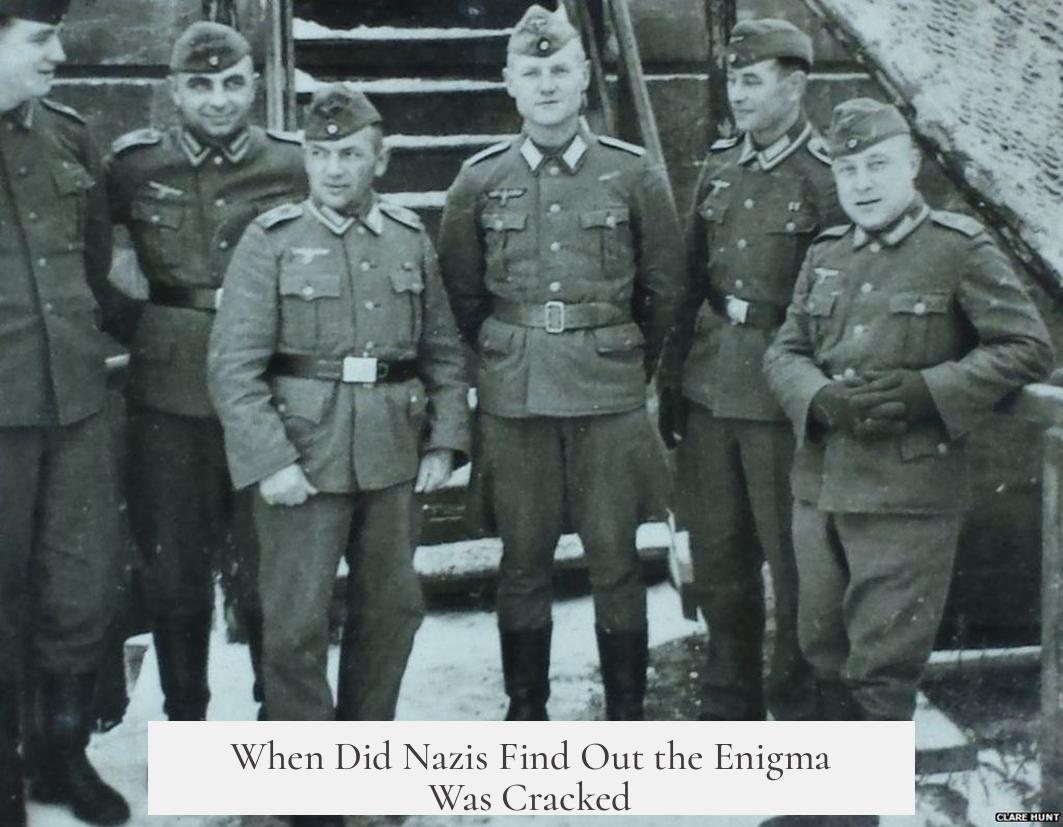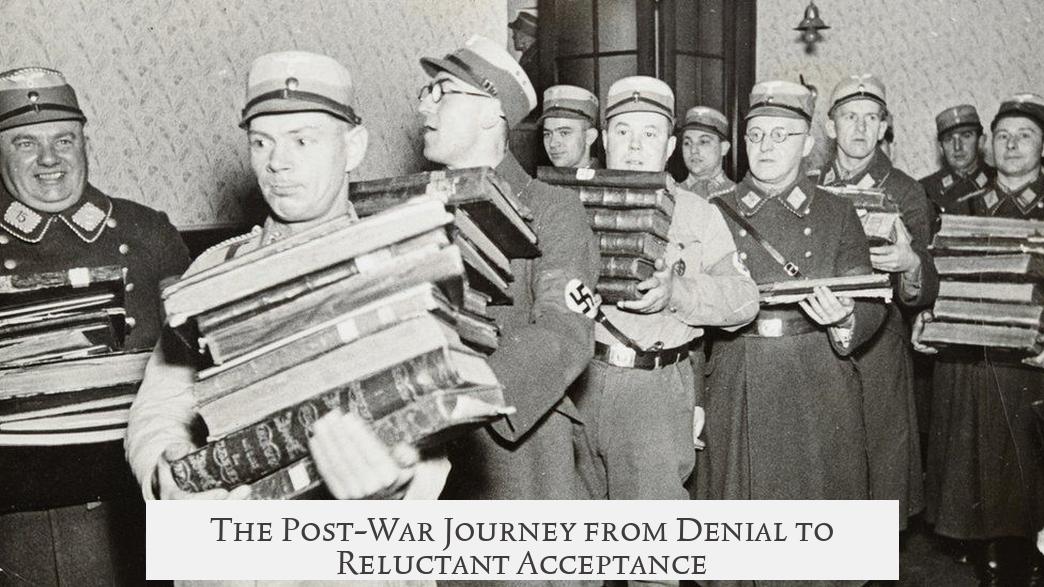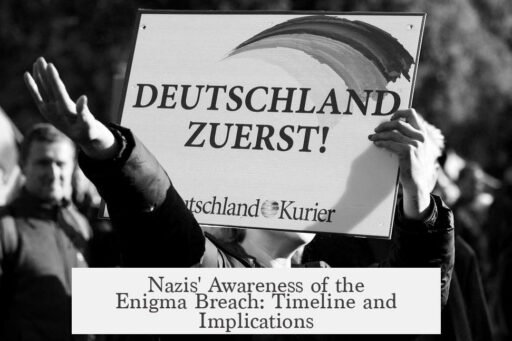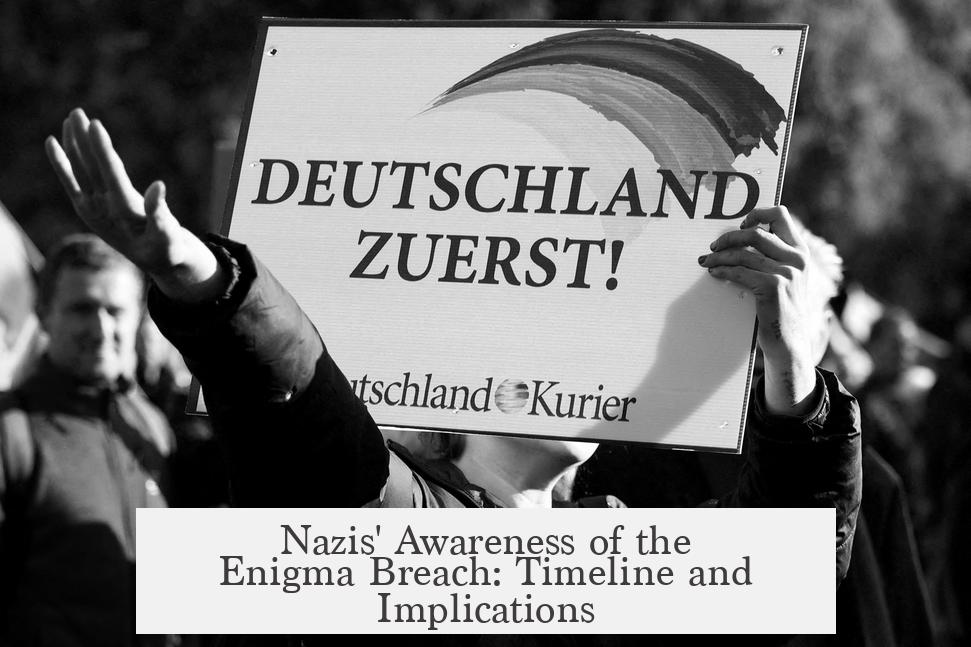The Nazis never realized during World War II that the Allies had cracked the Enigma cipher. Despite repeated Allied successes based on decrypted Enigma communications, the German military and intelligence services remained unaware of the breach until several decades after the war, only fully acknowledging it publicly in the 1970s.
The Third Reich’s intelligence agencies never detected the Enigma compromise while the conflict was ongoing. German officers and codebreakers failed to connect the dots, and the truth about Enigma’s breach emerged only after the Allies disclosed their Ultra intelligence program in the 1970s. Postwar German veterans initially denied the possibility of such a major intelligence failure. This denial persisted until official confirmations forced a reevaluation.
The Nazis’ failure to recognize Enigma’s compromise stems from multiple systemic issues. First, the German military and intelligence apparatus was heavily decentralized. Cryptography and signals intelligence were divided among the Wehrmacht branches and civilian services. Rivalries and lack of information sharing prevented any unified assessment of security breaches or suspicion that Enigma had been penetrated.
Investigations into intelligence leaks were routinely reactive and inconclusive. For example, heightened U-boat losses due to Allied interceptions triggered internal probes, but the German command attributed those losses to alternative causes. The complexities of war and operational hazards provided convenient explanations other than compromised codes.
- The German military culture undervalued intelligence work, often assigning less capable personnel to cryptographic duties.
- Blame for Allied successes using Ultra intelligence was shifted away from Enigma compromise, focusing instead on user errors or other causes.
This attitude was reinforced by early German experiences with Allied ciphers. Initial attempts to break enemy codes convinced German cryptographers that Allied cryptography was amateurish. As a result, German leaders felt confident in Enigma’s invulnerability. Periodic internal exercises attacking Enigma messages failed to show vulnerabilities using German methods. This fostered complacency and a false sense of security.
Alternative explanations for operational failures abounded. German command sometimes blamed poor communications security among Axis partners, especially Italian forces. Other rationales included espionage by prisoners of war or superior Allied radar and direction-finding techniques. These distractions hindered recognition of the true cause.
One notable incident illustrating German misunderstanding occurred in January 1943. The U-boat Command ordered submarines to rendezvous in a specific quadrant. Despite unexpected British interceptions suggesting foreknowledge of the meeting, German investigators dismissed the event as coincidence, asserting Enigma’s security remained intact. This shows how the Germans preferred denying evidence over confronting uncomfortable truths.
After the war, German historians and veterans initially rejected claims that Enigma had been broken. Two German reviews of the 1967 book Bitwa o tajemnice by Polish cryptographer Wladyslaw Kozaczuk dismissed his detailed account of the Polish role in cracking Enigma as fanciful. However, when the UK government officially declassified details of the Ultra operation in the early 1970s, many German commentators were shocked by the scope of the Allied success. Some former soldiers remained reluctant to accept the implications, but the consensus shifted toward acknowledgment.
| Factor | Impact on German Awareness |
|---|---|
| Decentralized Intelligence Services | Blocked holistic threat assessment; no unified cryptographic oversight. |
| Reactive Investigations | Explanations preferred non-cryptographic causes for losses or leaks. |
| Military Culture | Low prestige for intelligence; dismissed intelligence successes as operator error. |
| Complacency from Early War Success | False confidence in Enigma security and Allied cryptography quality. |
| Alternative Theories | Blamed Axis partners or technical superiority, deflecting from cryptographic failure. |
In sum, the Nazis lacked crucial self-awareness regarding Enigma. Their fragmented command, cultural biases, and misattribution of Allied successes combined to mask their cipher’s breach. Recognition only emerged years after hostilities ceased and extensive disclosures revealed the full extent of Allied codebreaking.
- The Nazis never learned during WWII that Enigma was cracked.
- Decentralized intelligence and infighting slowed detection.
- German culture undervalued intelligence and blamed operator error.
- Alternative explanations distracted from cryptanalysis breakthroughs.
- Full acknowledgement only occurred after Allied disclosures in the 1970s.
When Did Nazis Find Out the Enigma Was Cracked?

The short answer? The Nazis never truly realized their beloved Enigma machine was cracked during World War II. It wasn’t until decades later, in the 1970s, that they finally came to terms with the staggering intelligence breach. Even then, acceptance came slowly, wrapped in layers of denial and post-war reflection.
Sounds unbelievable? Let’s dive into why the Germans stayed in the dark about this massive compromise and explore the curious mix of military culture, missteps, and missed clues that kept them guessing.
Why Didn’t the Nazis Know Their Enigma Code Was Broken?
The Nazis’ failure to detect the breach boils down to a mess of organizational chaos and psychological blind spots. Unlike a tight-knit spy thriller team, the Third Reich’s intelligence services worked more like squabbling siblings than effective collaborators.
- Decentralized Intelligence Structure: The German cryptography and intelligence units were scattered across the army, navy, air force, and civilian agencies. Each branch jealously guarded its turf. No central agency collected and shared intel. This lack of communication was a recipe for disaster.
- Reactive Investigations: When German forces suffered setbacks, like losing U-boats unexpectedly, their investigations were more like patchwork attempts to find explanations. Instead of suspecting Enigma’s compromise, they blamed coincidental causes or errors in operations.
- Military Culture and Intelligence Perception: Intelligence was considered second-class work. Hotshot officers preferred glorified frontline duties to decoding secret messages. These officers saw Enigma successes as operator errors, not systemic leaks.
- Complacency from Early Successes: Before the war, Germany enjoyed success breaking the Allies’ codes and assumed their own crypto system was foolproof. They even ran internal tests attacking Enigma messages and concluded nobody could crack the machine—not even their experts.
- Alternative Explanations and Scapegoating: When something went wrong, the finger pointed elsewhere—blaming inept Italian allies, traitorous prisoners, or superior Allied radar technology. The idea that Enigma was compromised seemed absurd.
Take the U-Boat Rendezvous Incident of January 1943
Imagine this: The U-boat Command orders two submarines to wait for a supply ship in quadrant DF 50. Somehow, the British ambushed the meeting. If Enigma was secure, how did the Brits know?
The German investigation wrote it off as a British lucky guess, nothing more. “Coincidence,” they called it. No alarms. No urgency. The shocking truth—that Enigma had been cracked—remained buried under layers of convenient explanations.
The Post-War Journey from Denial to Reluctant Acceptance

Fast forward to the 1960s. Polish cryptographers, whose early work on Enigma was critical, published Bitwa o tajemnice (“Battle for Secrets”). German historians and veterans scoffed. The idea that the Poles could crack Enigma? Ridiculous!
It wasn’t until 1974, when the British officially declassified The Ultra Secret, that the truth emerged like a sudden thunderclap. The Third Reich’s vast intelligence operation had been outplayed spectacularly.
Even then, some Germans clung to denial, but shock rippled through the community. The scale of the breach was jaw-dropping. This secret disclosure shattered long-held beliefs about Germany’s cryptographic invincibility.
Why Did So Many Cling to Denial?
The explanations lie not just in pride but in practicality. Accepting that Enigma fell to Allied hands meant acknowledging years of lost lives and failed operations. It was an uncomfortable pill to swallow.
“The Germans underestimated how professional and dedicated Allied codebreakers were,” says military historian Dr. Lena Fischer. “They preferred narratives blaming operator mistakes or traitors rather than facing the hard truth of their own intelligence failures.”
Lessons From This Cryptographic Catastrophe
Many wonder: if the Nazis had known earlier about the Enigma compromise, how different would the war have been? Would victory still slip from their fingers?
The history suggests that centralized intelligence and open communication are critical. A decentralized and competitive intelligence structure, as the Nazis had, is dangerous.
- Keep your intelligence teams talking—sharing knowledge beats interservice rivalry.
- Don’t dismiss warning signs; investigate boldly and thoroughly.
- Guard complacency from past successes—it kills curiosity and adaptation.
These lessons resonate far beyond WWII. Today’s cybersecurity battles echo with the same themes: collaboration, vigilance, and humility.
Wrapping It Up
The Nazis never found out Enigma was cracked during WWII. Their internal bickering, misinterpretations, and poor culture around intelligence kept them blind to the espionage happening under their noses. Only decades later, when Allied secrets became public, could German veterans and historians finally grasp the magnitude of this cryptographic defeat.
So next time you hear about the Enigma machine, remember—it’s not just about clever codes. It’s about how people handle secrets, failure, and the uncomfortable truths that follow.
Curious about other mysteries of WWII intelligence? Stay tuned—there’s a whole vault of stories waiting to be unlocked.




